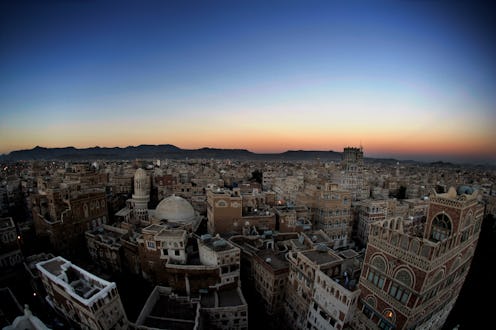News
What's Missing From The U.S.-Cuba Deal
On Wednesday, President Obama announced he's working with the Cuban government to restore relations between Cuba and the United States after 54 strained years. Which means, in addition to several provisions, the president will ease travel restrictions for Americans who are eligible for family visas and have relatives on the island. While the specifications haven’t yet been announced, the new rules are a step towards reconnecting more Cuban-Americans with their roots.
But there's one problem: There are no visas designated for people with Cuban heritage and without immediate family, leaving a large chunk of people with historic ties to the country unable to explore their culture. People like me and my family.
I am Cuban. My father’s parents came to the U.S. in 1946, bouncing between Ohio, Washington and Illinois before settling in the not-so-classic Cuban haven of Maine. My immediate family has since fled the island, disqualifying me for a family visa.
Since the embargo was put in place in 1960, travel to Cuba has been difficult for Americans wishing to see family. It became more arduous when former president George W. Bush tightened the rules so U.S. citizens with close relatives could visit once every three years for a maximum of two weeks. But in 2009, just several months after his initial election, Obama removed the stipulations on the frequency and duration of trips for eligible travelers.
As it stands, a U.S. citizen with family on the island may visit a close relative. You have to be, as defined by the U.S. Department of Treasury, “any individual related to a person by blood, marriage, or adoption who is no more than three generations removed from that person or from a common ancestor with that person.”
Tourism is still banned. There are currently 12 permitted categories of travel for Americans flying to Cuba, including journalistic, professional and educational and religious activities. There are sneaky ways, like going through the Dominican Republic and Canada, but for rule-abiding citizens, options are limited.
Growing up in Maine, I felt a strong disconnect from my roots. There isn’t a bustling Cuban population up north. Hell, there wasn't even a Cuban restaurant in the vicinity of my hometown. But I was able to get a taste of the culture through my grandmother (my paternal grandfather died before I was born). We had weekly sleepovers when I was a teen and each night was filled with cooking Cuban dishes, playing “go fish” in Spanish and watching the latest episode of “Survivor.” While she shared her stories and gave me an idea of what it meant to be Cuban, I felt I wouldn’t truly understand until I went to the island.
Four years ago, I moved to New York City and dove into learning more about the country. I met other Cubans, began writing about Cuban news in graduate school and then hatched a plan to go with a fellow classmate in 2012 to visit her extended family.
When I stepped off the plane in Havana, the first thing I smelled was car exhaust. It hung in the humid air, creating a cloud and perfuming the tropical atmosphere. The smell comes from the back of old tailpipes, attached to even older cars that motor down the road with cabins full of people. My friend and I hopped into the back of her cousin’s car and took a tour Havana, pausing at the Fidel Castro billboards and historic landmarks before visiting their home. We spent part of our days with the family and other hours exploring the Havana area. But every day included lengthy discussion with Cubans about our life, theirs and what they wanted for the future of their country.
I expected there to be a moment in my travels when things clicked. Perhaps one instant that defined what it meant to be Cuban and highlighted how my identity fit into the Cuban-American equation. But it was every experience — and simply being on the island — that shaped my opinion.
It was when I spent time with my friend’s family, cooking, speaking Spanish and discussing pop culture – all the activities I once did with my grandmother. But by using ingredients, rations and utensils, I saw a side of Cuban culture that I couldn’t get in America.
It was conversing with people when I witnessed the unbreakable hope that Cubans hold. It sat on the faces of the fishermen casting into a sea void of boats because the option of sailing away was banned; the family preparing meals with powdered dairy products because fresh ingredients were scarce and the younger generations dreaming of more from inside dilapidated homes.
And it was in my last moment before I set foot on American soil again. The tires on our plane had just touched the pavement when the cabin erupted in applause. As a nervous flyer who has gleefully clapped after surviving bumpy rides, I thought their reaction to the smooth journey was strange. It was only after my friend leaned over the arm rest and whispered that their celebration was because they were in America, did I understand their sentiment and what it mean to be Cuban.
Allowing people of Cuban descent to visit could help connect the two counties that are separated by only 90 miles of ocean. For some, it takes seeing the street your grandmother grew up on or chatting with many generations of nationals to understand what it means to be Cuban. And that’s a chance that no one should have to miss.
Images: Emily Canal (5)
